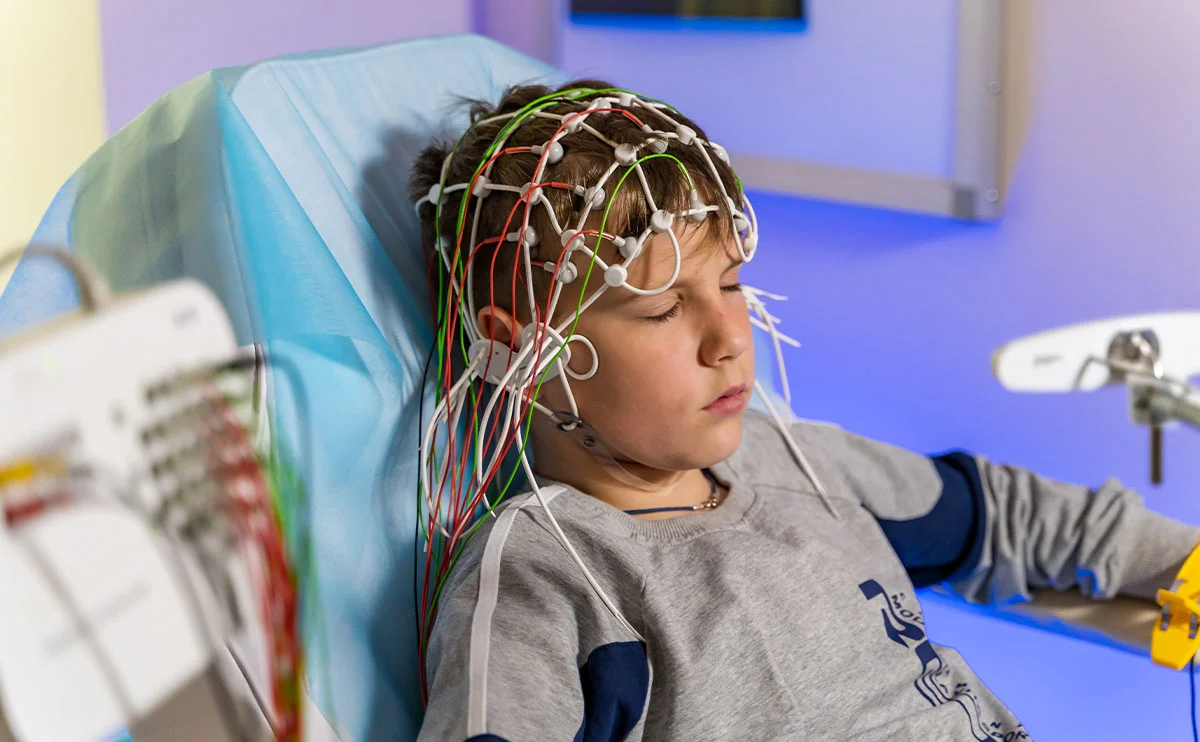Neurofeedback can usually be applied to children starting at the age of 5. However, since each child’s developmental status is different, it is best to consult a specialist about the age at which neurofeedback should be started. The specialist will evaluate the child’s condition and determine whether neurofeedback is appropriate and when it should be started.
Benefits of Neurofeedback in Children:
Neurofeedback can provide benefits in a variety of areas for children. It has shown promising results, especially in conditions such as attention deficit hyperactivity disorder (ADHD), learning disabilities, autism spectrum disorder, anxiety, depression, sleep problems, behavioral problems, and motor skill problems.
Potential Benefits of Neurofeedback:
- Increased Attention and Concentration: Neurofeedback can help children increase their attention span, focus, and control their attention better.
- Reduced Hyperactivity: Neurofeedback can help reduce symptoms of hyperactivity, such as overactivity and impulsivity.
- Improved Learning Skills: Neurofeedback can help children improve learning skills such as reading, writing, and math.
- Improved Emotional Regulation: Neurofeedback can help children better manage their emotions and cope with emotional issues such as anxiety and depression.
- Improved Sleep Quality: Neurofeedback can help children with sleep problems sleep more comfortably and improve the quality of their sleep.
- Reducing Behavioral Problems: Neurofeedback can help reduce behavioral problems such as aggression and defiance.
- Improved Motor Skills: Neurofeedback can help improve motor skills such as fine motor skills and gross motor skills.
Who is Suitable for Neurofeedback Treatment?
Neurofeedback treatment is usually applied to children who are deemed appropriate after being evaluated by a specialist health professional. It can be an option for children with conditions such as ADHD, learning disabilities, autism, anxiety, and depression, and who have not benefited sufficiently from other treatment methods. However, it is important to remember that neurofeedback is not suitable for every child and may have side effects in some cases.
What You Need to Know About Neurofeedback:
- Neurofeedback is a long and patient process. Treatment results usually start to appear after a few sessions.
- Neurofeedback sessions should be performed by a qualified healthcare professional.
- More research is needed on the effectiveness of neurofeedback.
- Neurofeedback may not be an appropriate treatment method for every child and may have side effects in some cases.
To learn more about neurofeedback, it is recommended that you consult with a healthcare professional. Your healthcare professional can evaluate your child’s condition to determine if neurofeedback is appropriate and create a personalized treatment plan for you.
Who Can Apply Neurofeedback Therapy?
Neurofeedback therapy should be administered by a qualified healthcare professional. This typically includes:
- Psychologists: Clinical psychologists, neuropsychologists, or educational psychologists may have training in neurofeedback.
- Psychiatrists: Neurofeedback is also used as one of the treatment methods by some psychiatrists.
- Neurologists: Neurologists, who specialize in the brain and nervous system, can also perform neurofeedback therapy.
- Special Education Specialists: There are also special education specialists who apply neurofeedback therapy to children with learning disabilities or attention deficit problems.

